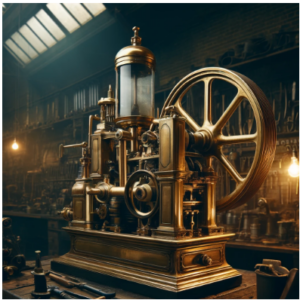Instrumentation engineering, as a distinct field of study and application, has a rich history that traces back to the advent of industrialization.
Here’s a detailed exploration of its evolution:
Early History
The roots of instrumentation engineering can be found in the developments of measurement systems and devices, which have been integral to human endeavors in science and engineering for centuries. Early examples include the use of scales for mass measurement, water clocks in ancient Egypt, and the astrolabe in the Islamic Golden Age. The need for control and instrumentation became more defined with the onset of the mechanical age.

Industrial Revolution (1760-1840)
The Industrial Revolution marked a significant leap in the demand for and complexity of instrumentation. The introduction of steam engines required effective pressure measurement and control systems to ensure safety and efficiency. James Watt’s steam engine, with its centrifugal governor (invented by Watt in 1788), is one of the earliest examples of a feedback control mechanism, a fundamental concept in instrumentation and control engineering.

The 19th Century: Expansion and Standardization
Throughout the 19th century, as industries expanded, the need for standardized instruments grew. The development of the telegraph and later the telephone involved intricate electrical measurements, leading to advances in electronic instrumentation. Companies like Siemens and General Electric began to establish themselves as industrial leaders in electrical and control engineering technologies.
Early 20th Century: Rise of Electronic Instrumentation
The early 20th century witnessed the emergence of electronic instruments, spurred by innovations in vacuum tube technology. Instruments for measuring voltage, current, and resistance became more precise and reliable. During World War II, the development of radar and other electronic systems significantly advanced the field of electronic instrumentation.
Mid to Late 20th Century: Automation and Computers
The introduction of transistors in the 1950s and integrated circuits in the 1960s revolutionized electronic instrumentation by making devices smaller, cheaper, and more reliable. This period also saw the beginning of automation in industry, with the development of programmable logic controllers (PLCs) and later, distributed control systems (DCS). The advent of computers and digital technology led to significant enhancements in data acquisition, processing, and control.
Late 20th Century to Present: Digitization and Integration
With the digital revolution, instrumentation engineering has expanded into software and systems integration, encompassing areas such as embedded systems, network communications, and information technology. Modern instrumentation involves sensors and devices connected via the Internet of Things (IoT), providing unprecedented levels of data and connectivity. This integration allows for sophisticated control strategies like predictive maintenance and real-time optimization.
Current Trends and Future Prospects
Today, instrumentation engineering is vital in optimizing processes and improving safety in industries such as manufacturing, pharmaceuticals, and energy. Recent advances focus on wireless sensor networks, machine learning algorithms for predictive analysis, and the integration of cyber-physical systems. The field is continuously evolving, driven by technological advancements in sensors, data analytics, and AI.
Instrumentation engineering, as a discipline, has grown from mechanical systems to sophisticated, integrated digital systems, playing a crucial role in the advancement of modern industry and technology. Its future, increasingly intertwined with digital and AI technologies, holds promising developments for automation and efficiency in virtually all sectors of industry and research.
